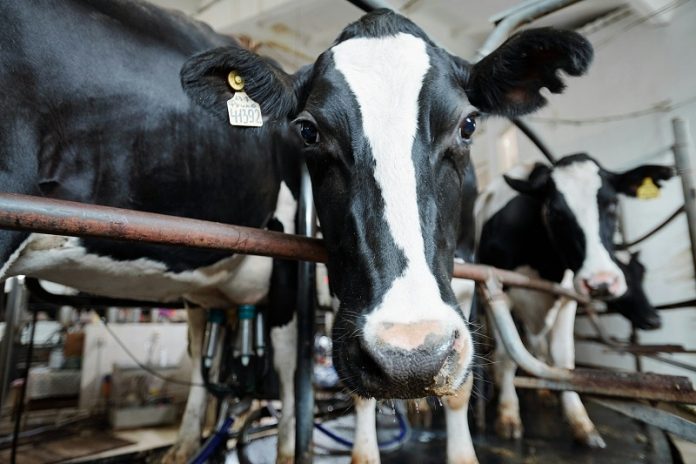
A recent study published in Nature suggests that milking procedures could be a key way that the highly pathogenic H5N1 avian influenza virus (bird flu) spreads between dairy cows.
This finding comes after bird flu was detected in cattle across the U.S. in the spring of 2024, affecting over 190 dairy farms in at least 13 states.
While milking equipment is suspected as a major route of transmission, further research is needed to confirm this.
In the study, researchers led by Jürgen Richt and Martin Beer conducted experiments to better understand how the virus spreads among cattle.
They infected nine calves and three lactating cows with the H5N1 strain currently circulating in U.S. cattle. They also tested another strain of bird flu (H5N1 euDG) found in Europe on three additional cows.
The calves showed only mild symptoms, with moderate viral replication, and did not pass the virus to other calves housed with them.
However, the dairy cows had a much more severe reaction, with their mammary glands becoming heavily infected. This led to symptoms like fever, mastitis (inflammation of the mammary glands), and a sudden drop in milk production.
Interestingly, the researchers found a significant increase in virus levels in the milk from the infected cows.
However, there was no evidence that the virus spread through the cows’ respiratory systems, as there was no nasal shedding of the virus.
These results suggest that the virus is more likely to spread between cows through contaminated milk and milking equipment rather than through the air.
This highlights the importance of proper hygiene and sanitation in milking procedures to prevent the spread of bird flu among cattle.
In conclusion, the study points to milking as a likely primary route for the transmission of bird flu between dairy cows, emphasizing the need for stricter control measures in dairy farming to limit the spread of this dangerous virus.



